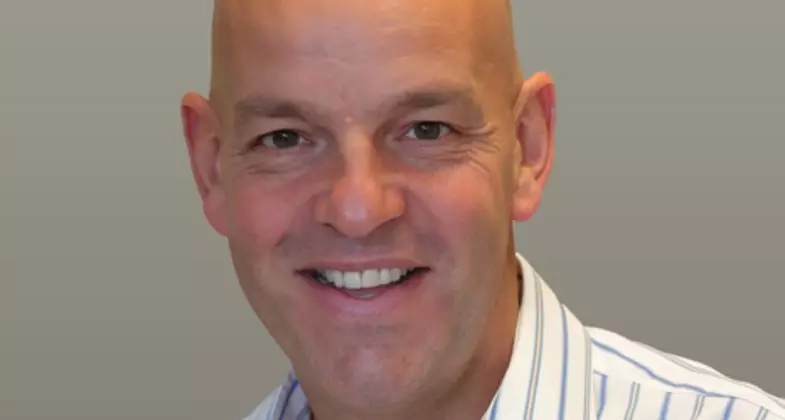Developing your career beyond HR? Stuart Branch, Group People and IT Director of Weetabix

With HR Directors’ presence at the board table becoming more prominent, and their strategic input more critical, is their involvement and oversight of functions in an organisation growing? As part of continued conversations with senior HR Directors in the market, a small but growing number now have responsibility for other functions such as marketing and technology alongside HR. In the first of our ‘developing your career beyond HR’ series, we talk to Stuart Branch, Group People and IT Director at Weetabix. The conversation explores Stuart’s journey of heading up HR and IT, and ultimately whether he thinks that this could be an emerging theme, or something more circumstantial.
Stuart, could you let us have an introduction to your background and when you took on responsibility for IT?
Interestingly, a number of my CEOs have praised the commercial and operational thinking I bring to the team, as well as my functional expertise. In my early career I was a GM before I moved into HR in a multisite environment, and so I consider myself a business professional first and HR professional second. Prior to Weetabix, I did have responsibility for HR and Customer Service, working for Masco, based in Luxembourg. I knew that I always wanted a role with significant complexity and business involvement, not just purely HR.
At Weetabix, IT & Business Systems came under my remit, having sat under Finance, predominantly off the back of a two and a half year ERP implementation. Even when the function sat under Finance, my HR team and I were heavily involved in looking at IT performance and change management, as well as organisation and work design.
What was the planned impact to the IT function from your leadership?
It was widely understood that IT & BS needed to go through significant change. We had to look at what we were trying to do as a function through to how we were behaving. The planned impact was to shift the ethos and mindset of people trying to run a tech business within a food company to a service and business partnering function that sees their colleagues as internal customers. We shifted the focus to adding value through systems, process and technology, but we were also prepared to make sure IT was holding the business to account for agreed ways of working, as well as serving it.
What legacy have you created in IT? What did you ‘land’ that a traditional CIO couldn’t have?
I don’t feel I have a legacy – yet – but I probably have created an awful lot of turmoil! I hope and think that what I have done would be the same that any good CIO would have done. We have created a vision, listened to what our customers need and expect from us, agreed with the business what needs change versus what needs to stay the same, and been clear about our commercial impact and how we help the business serve more of the UK’s favourite breakfast to the UK and more than 80 countries worldwide.
What did this change mean for the HR function and how did your HR team cope?
I commissioned a piece of research before I took over IT, to study the organisational design and leadership of multiple functions, specifically focused on how companies had tried, or not, to integrate HR and IT into one support function vs running them as two separate functions under one Exec member. The research came back suggesting that very few organisations had merged the two functions and, when they had, they had often unwound the two afterwards. The research confirmed merging the two created issues with recruitment and retention as these, new combined role profiles were not typical in the market place.
As I took responsibility of the IT function, I wanted to be very deliberate with my presence and visibility as a leader within the team, resulting in necessary conversations with the HR team around how they had the opportunity to step up and help run the function. I’m so proud of how positively the team responded to this.
What similarities are there between the functions?
Both are service and support functions where we must understand our customers. Also, both teams must truly partner with the business, both supporting and challenging and, when we get this right, we make a huge difference to the organisation.
What were the toughest lessons in adopting IT as part of your remit?
With HR, I had some degree of professional confidence and comfort that, when making decisions, I had ‘been there, done that’. With IT I was venturing into the unknown, having to pick things up very quickly as we were making difficult and often daunting decisions.
Do you see yourself as a trendsetter and think that other organisations will follow suit? Or is it just circumstantial and, for other organisations, IT and HR will continue to be separate?
I feel that this move was predominantly due to timing for Weetabix rather than any leadership trailblazing. I did have a hand in shaping the current set-up over a few years, as we were thinking about where IT could fit best. We saw that IT needed more commercial focus, an opportunity for partnering and business engagement, and so I felt confident I could oversee the function alongside HR. I would stress, however, that as we see more business automation and more insight from data, and as we progress how people and processes work together with systems and technology, there’s likely to be an evolution in how these two functions continue working closer together, not just at Weetabix.
With two years at the helm of both functions, Stuart gives a balanced and thought-provoking opinion on this topic. The set-up certainly seems to have worked for Weetabix, with Stuart picking up his new function quickly and contributing strategically from an HR and IT perspective at the board table.




